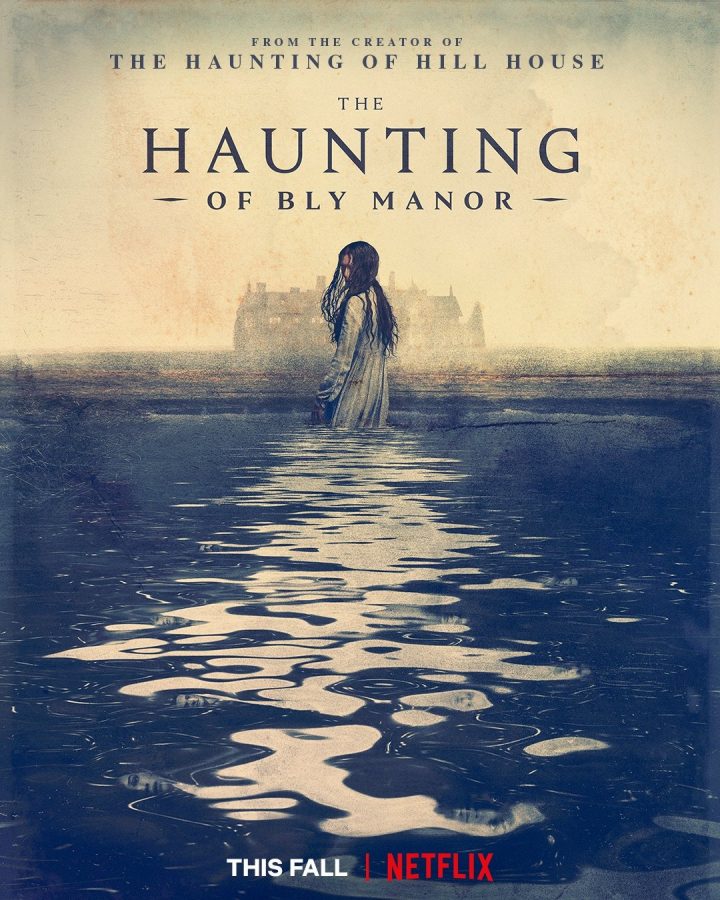“The Haunting of Bly Manor” Review
On Oct. 9, the highly anticipated second chapter of The Haunting anthology series came out on Netflix.
Although this chapter, titled “The Haunting of Bly Manor,” follows the incredibly successful first chapter, “The Haunting of Hill House,” it can be watched separately from its predecessor and stands well on its own. Both “The Haunting of Hill House” creator Mike Flanagan and producer Trevor Macy were once again brilliant creative forces behind this new addition to The Haunting anthology, which may not be quite as scary as Hill House, but is still very good at giving its audience the creeps.
“The Haunting of Bly Manor” loosely follows the premise of the 1898 horror novella “The Turn of the Screw,” written by Henry James, and is less about the spooky specters (though there are plenty of those) and more about building anticipation through shots that set the viewer up for a scare that never comes.
Often, the camera lingers in a dark hallway, or the person speaking is not centered so that the audience is expecting something to happen right behind them. It is wonderfully disconcerting.
The plot itself is captivating. Set in 1980s England, it follows the story of a young American woman who is hired as an au pair for two orphaned children. She is to stay in the country estate with the two children and is instructed by their uncle, their only living guardian, not to contact him unless there is an absolute emergency.
The show stars Henry Thomas as the children’s Uncle Henry, Victoria Pedretti as the American au pair, Amelie Bea Smith and Benjamin Evan Ainsworth as the young niece and nephew, Rahul Kohli as the charming cook, Amelia Eve as the rough-around-the-edges groundskeeper and T’Nia Miller as the welcoming if not mysterious housekeeper. The characters and their backgrounds easily pull you in and get you emotionally involved.
Thomas and Pedretti, along with Oliver Jackson-Cohen (who returns with an important role) are all returning actors from “The Haunting of Hill House.”
I was pleasantly surprised by the LGBTQ+ representation, which played a consistent role in the storyline and was a significant part of the character development.
The underlying discussions prompted by “The Haunting of Bly Manor” include a portrayal of class structure that drives characters into conflict with each other.
This “us vs. them” perspective is especially poignant throughout as we see how the characters who are considered “the help” are affected differently than those who have money to burn.
“The Haunting of Bly Manor” takes its time getting to the climactic action, using the first few episodes as tools to build the story as well as suspense. About halfway through the season, the episodes begin to pick up into a spell-binding frenzy that launches the audience into questions such as: what are time and memory? What is the difference between purgatory and hell? Is one worse than the other?
With an abundance of unexpected twists and turns, this chapter of The Haunting anthology is not one to miss. The characters are easy to identify with, the story is full of suspense and the conversations to be had after the fact are just too good to pass up.
“The Haunting of Bly Manor” can be found on Netflix.




